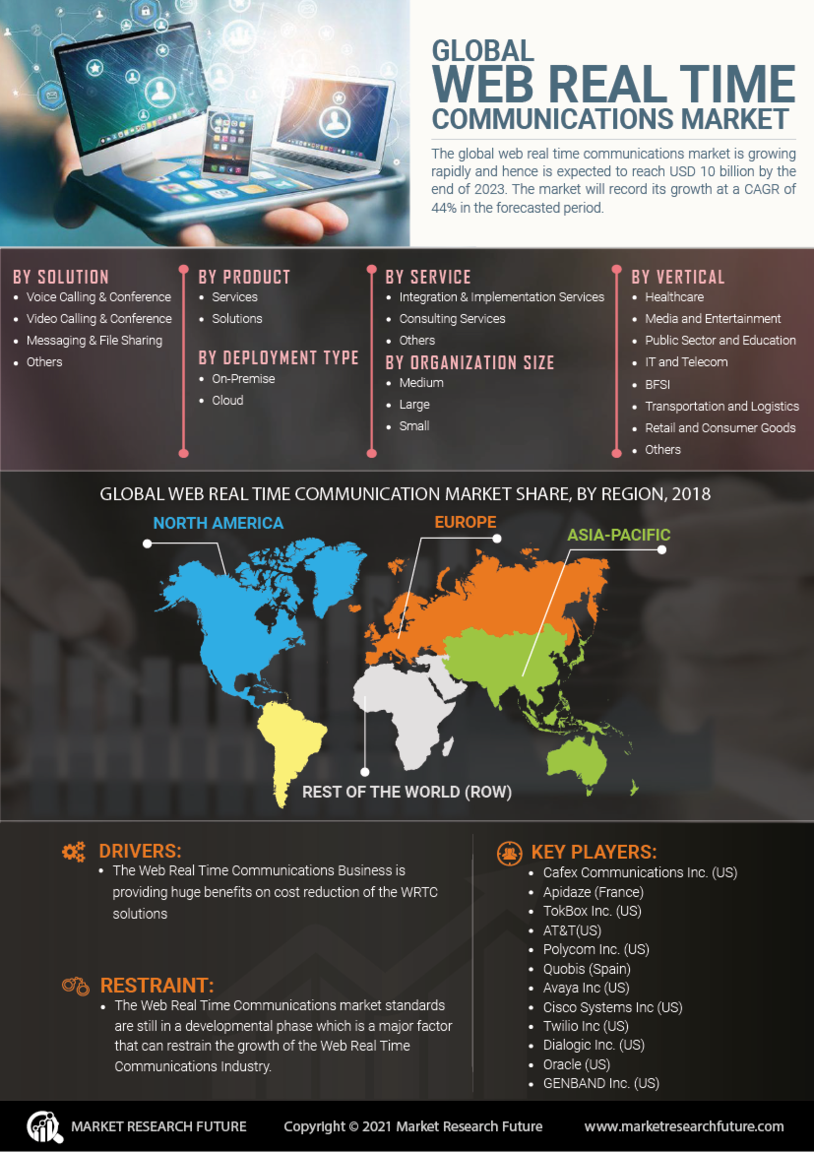Advancements in Internet Infrastructure
The evolution of internet infrastructure plays a crucial role in the Web Real-Time Communications Market. With the rollout of high-speed internet and the expansion of 5G networks, the capacity for real-time communication has significantly improved. Enhanced bandwidth and reduced latency enable smoother video and audio transmissions, which are essential for effective communication. As per industry reports, the adoption of 5G technology is expected to reach over 1 billion connections by 2025, further propelling the demand for real-time communication solutions. This advancement not only supports existing applications but also paves the way for innovative services within the Web Real-Time Communications Market, allowing for richer user experiences and broader application scenarios.
Regulatory Compliance and Data Security
The Web Real-Time Communications Market is increasingly influenced by the need for regulatory compliance and data security. As organizations adopt real-time communication solutions, they must navigate a complex landscape of regulations concerning data protection and privacy. Compliance with standards such as GDPR and HIPAA is essential for businesses operating in sensitive sectors. This necessity drives demand for secure communication platforms that ensure data integrity and confidentiality. Industry expert's suggest that the emphasis on security features will continue to grow, as organizations prioritize solutions that not only facilitate communication but also safeguard sensitive information. Thus, the Web Real-Time Communications Market is likely to evolve in response to these regulatory pressures, fostering innovation in security technologies.
Rising Importance of Customer Engagement
In the current business landscape, customer engagement has emerged as a critical focus for organizations, significantly impacting the Web Real-Time Communications Market. Companies are increasingly leveraging real-time communication tools to enhance customer interactions, providing immediate support and personalized experiences. This trend is supported by data indicating that businesses utilizing real-time communication solutions report higher customer satisfaction rates. As organizations recognize the value of engaging customers in real-time, the demand for innovative communication solutions is expected to rise. Consequently, the Web Real-Time Communications Market is likely to see an influx of new technologies aimed at improving customer engagement and retention.
Growing Adoption of Unified Communication Platforms
The trend towards unified communication platforms is reshaping the Web Real-Time Communications Market. Organizations are increasingly integrating various communication tools into single platforms to streamline operations and enhance user experience. This consolidation allows for improved collaboration among teams, as employees can access voice, video, and messaging services from one interface. Market analysis indicates that the unified communications market is expected to surpass USD 100 billion by 2026, reflecting a robust growth trajectory. This shift towards unified solutions is likely to drive further innovation within the Web Real-Time Communications Market, as providers develop more comprehensive offerings that cater to diverse business needs.
Increased Demand for Remote Communication Solutions
The Web Real-Time Communications Market experiences heightened demand for remote communication solutions, driven by the increasing need for businesses to maintain connectivity in a digital-first environment. As organizations adopt flexible work arrangements, the necessity for reliable and efficient communication tools becomes paramount. According to recent data, the market is projected to grow at a compound annual growth rate of approximately 20% over the next five years. This growth is indicative of a broader trend where companies prioritize seamless communication to enhance productivity and collaboration. The Web Real-Time Communications Market is thus positioned to benefit from this shift, as more enterprises seek to implement solutions that facilitate real-time interactions, thereby fostering a more agile and responsive workforce.


















Leave a Comment